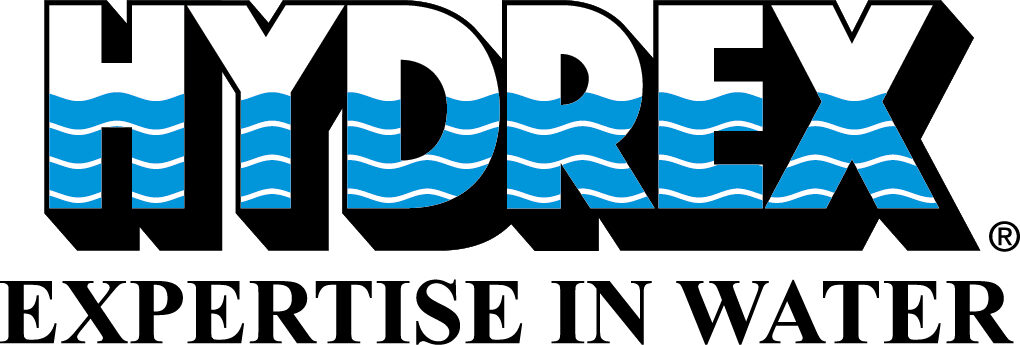In our magazine we often write about the larger projects that our teams perform across the globe. This may give readers the idea that we only mobilize when such major challenges come up. However, this is definitely not the case. We treat every assignment with the same professionalism and enthusiasm, whether it is the replacement of a giant azimuth thruster or an underwater propeller cleaning.
Smaller maintenance operations are performed by our divers on a daily basis and are dealt with in a skilled and proficient manner. They include:
- Installation or replacement of anodes
- Blankings
- Replacement of transducers
- Propeller cleanings
- All types of inspections
This article focusses on some examples of those smaller maintenance operations.

Inspections
Building upon conventional technical skills and know-how while also taking advantage of the latest technology, we offer a unique hull monitoring service to our customers. This gives shipowners total control of their ship’s hull condition and consequently its performance, with only a minimum of work on their part.
Underwater inspections represent a small investment and, if properly done, have the potential to save an owner a great deal of money. Regular inspections carried out by competent divers and accompanied by comprehensive and accurate reports can detect and make known problems so that they can be corrected early. This prevents the more costly repair which neglect and further damage would make necessary.
Because we have over 45 year of experience in both maintenance and repair services, we can carry out any required follow-up repair without any unnecessary loss of time. Scheduling in a new date is not needed as all our diver/technicians are skilled to perform the repair work as well.
If the damage found during an inspection can be anticipated, the required equipment can be mobilized in advance. Otherwise it can be transported to the location of the vessel immediately from one of our fast response centers where a large stock is available for our teams at all times.
This was demonstrated when a routine underwater inspection revealed that a rope guard had come loose on the ship. Our team secured the rope guard without any delay for the owner.

Anode installation
When an oceanographic research vessel needed 52 sacrificial anodes installed, we sent a diving team to Dunkirk to perform the underwater installation.
The customer had passed on all the necessary information to our technical department and, after preparations in our fast response center, the equipment was loaded onto one of our trucks and transported to the vessel’s location.
In this case the anodes were supplied by us, saving the owner the trouble of having to arrange the delivery himself.
Our diver/technician team then installed the anodes, giving the vessel protection against corrosion.

Blanking
A team of our diver/welders blanked all underwater openings of four offshore vessels in Dunkirk, France, over a period of four weeks.
Two hydrographic survey vessels, an oceanographic vessel and an offshore installation vessel were laid up in Dunkirk for an extended period of time and it was essential that they be kept safe during this period.
The underwater part of the ships especially needed additional protection against the constant corrosive effects of seawater. We were asked to develop a fast and complete solution to close off all the underwater openings of the vessels including sea chests, overboard valves and box coolers. Our diver/technicians installed between 30 and 40 blanks on each ship, ranging from small 10 x 10 cm up to very large 4 x 4 meter plates.
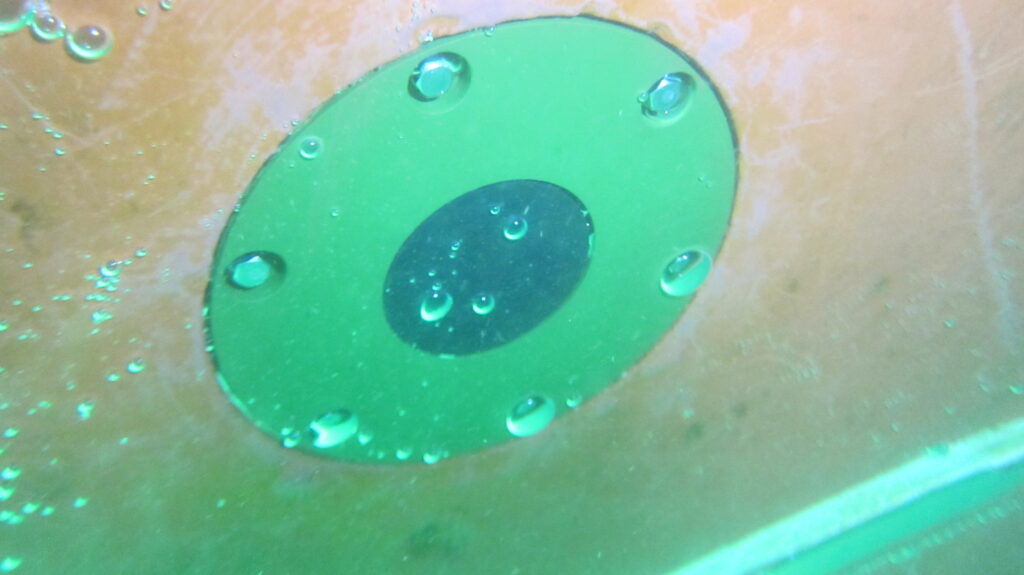
Transducer installation
Our teams can very quickly replace any type of transducer without interruption to a ship’s schedule. We can also fully install transducers should this be required. This was the case when two 193-meter general cargo vessels each needed a speed log installed during their stay in Antwerp.
Our diving team started the operation with an inspection to determine the best place to install the speed log. They then marked the exact position where the speed log was to be positioned.
The next step was to install a cofferdam over this area creating a dry space within it. Members of the team onboard the ship then cut a hole on the inside of the hull to the exact dimensions of the speed log and fitted and installed the housing. An oil ring seal was used to close off the housing to prevent water ingress.
At the same time, the other members of the team prepared the wiring for the speed log which was connected to the housing. At this point the cofferdam was removed. The wiring was then installed inside the vessel and the speed log was connected to the ship’s electrical system.
The installation was carried out rapidly and flawlessly on both vessels which were then able to benefit from a fully operational speed log system on board, all without having to go to drydock.
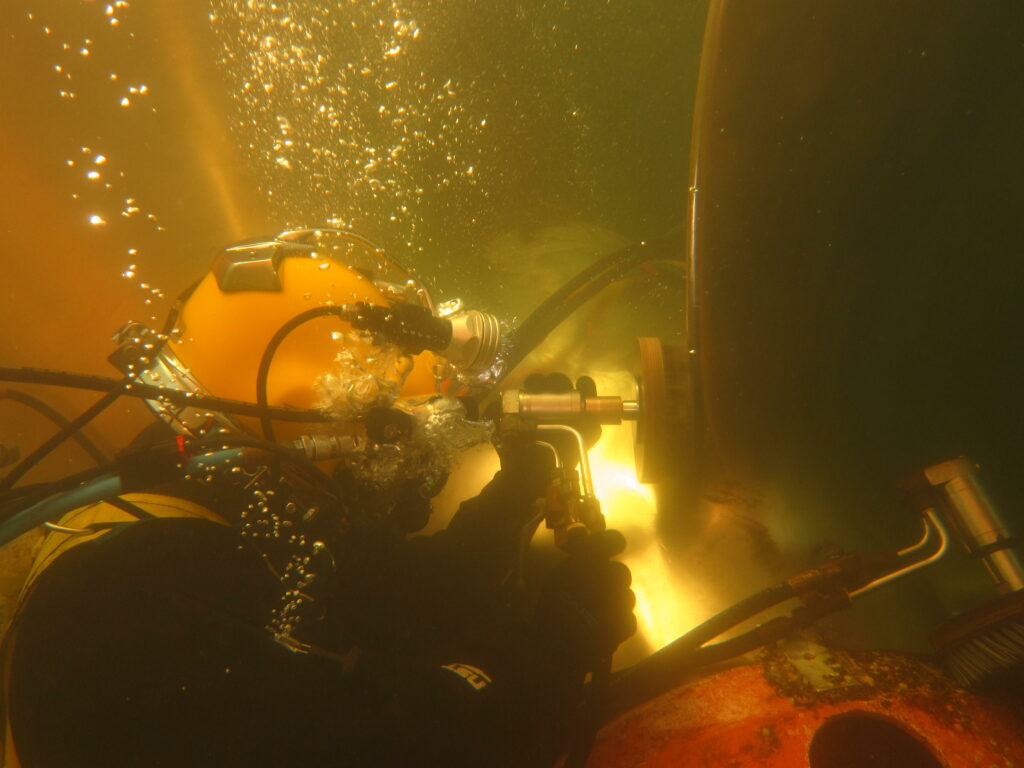
Propeller cleaning
We have developed a new method of propeller cleaning. The traditional approach in the industry is to let the propeller foul and build up a calcareous growth and then polish once or twice a year underwater or in drydock. This polishing is done with a grinding disk which can be quite damaging to the propeller because a substantial amount of metal is removed, often altering the shape and efficiency of the blades, causing roughness and increasing rather than reducing friction. It is also a major source of marine pollution which is a problem in many ports.
We discovered that more frequent, lighter cleaning of the propeller is the optimum. This is done using a much milder tool than a grinding disk, capable of removing the fouling before a calcareous layer builds up. Regularly and correctly done, this can result in 5% or even more fuel savings. These savings far outweigh the cost of the propeller cleaning itself. Because the propeller is treated regularly, the cleaning is light and quick. No material is ground away which is good for the propeller and the environment. The blades are kept in an ultra-smooth condition which is how the fuel savings are achieved.
Many of our customers who have used this service have noticed a remarkable difference in their fuel efficiency after each cleaning. To quote one chief engineer, “You can clearly tell the difference in a ship’s performance after Hydrex has done its thing [propeller cleaning].”
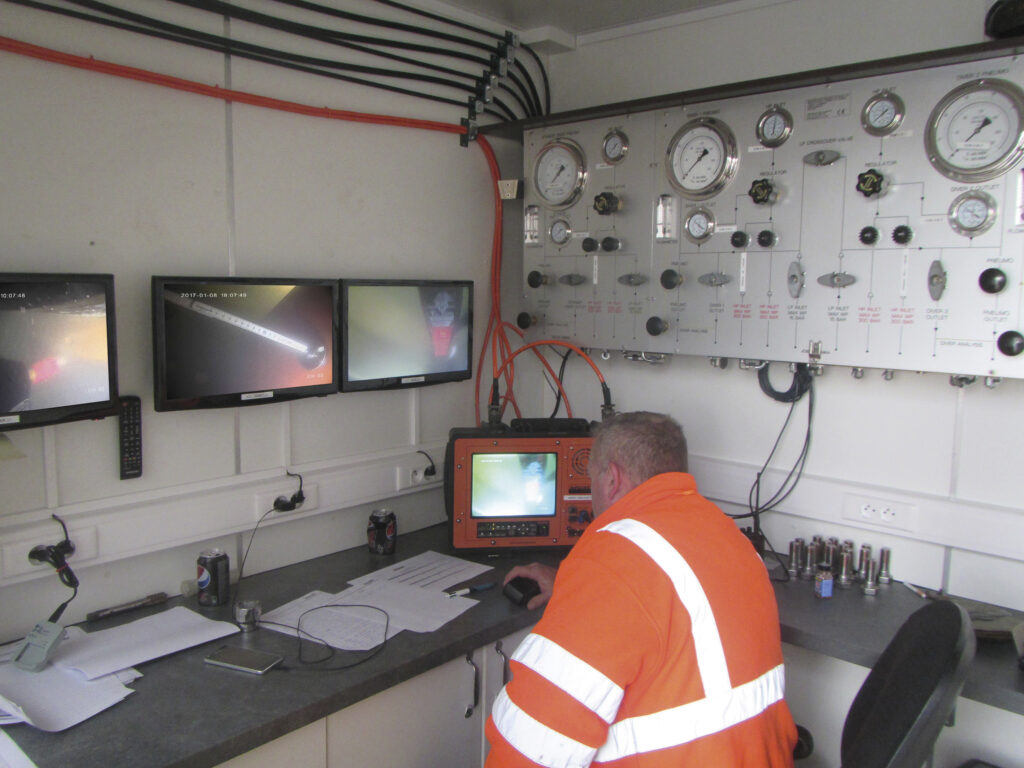
Easy to combine with other operations
Our teams consist of highly trained and experienced divers who can spot problems that are not directly related to the operation at hand. In this case, we will immediately communicate this to you so that we can follow up without delay if needed.
Minor operations like the ones described in this article can be combined with one or more other operations very easily. This can be any other maintenance or repair job.
By doing this, the shipowner is saved the hassle and cost of multiple mobilizations and possible delays to his vessel’s sailing schedule.
If a problem arises, no matter how big or small, it is important for you that it is solved as quickly and as efficiently as possible. Solving problems is exactly what we do, so do not hesitate to contact us for advice on dealing with both unusual and typical situations. Thanks to our network of offices and local support bases we can mobilize quickly to locations around the world.
If you any type of maintenance work carried out, give us a call. We are at your disposal 24/7 and ready to mobilize almost immediately.
+32 3 213 53 00
hydrex@hydrex.be
Click on the images below for case studies of the repair services we offer.
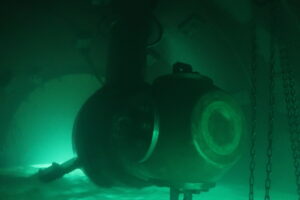
Underwater bow thruster operation in Algeciras
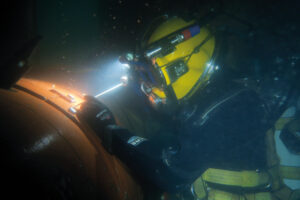
Stern tube seal repairs close to home and far away
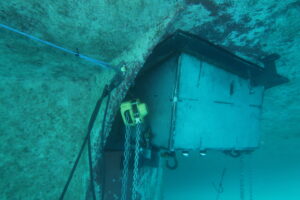
Shell plating repairs across Europe
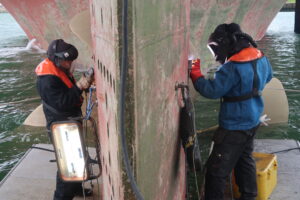
Several repairs performed simultaneously in Flushing
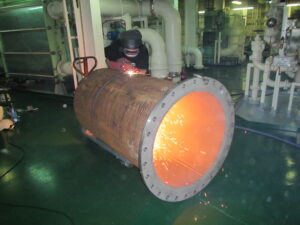
Scrubber overboard pipe repairs in the Netherlands, France and Spain

